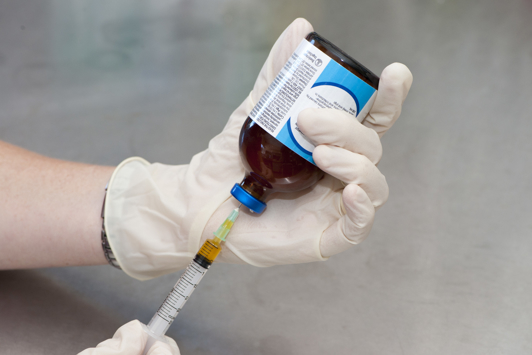Antimicrobial resistance threatens the effective treatment of an increasing range of infections in humans and animals caused by bacteria, parasites, fungi and viruses.
Minimising the development of antimicrobial resistance will enhance the productivity, reputation and market access opportunities of our livestock industries, both domestically and internationally, and protect animal and public health by preventing the emergence and spread of resistant organisms.
What is antimicrobial resistance?
Antimicrobial resistance is the ability of microorganisms (like bacteria, viruses, fungi and parasites) to stop an antimicrobial (such as antibiotics, antivirals and antiparasitics) from working against them. As a result, existing medical treatments could have reduced effectiveness, or become ineffective, and infections continue to persist and may spread to others.
What has caused antimicrobial resistance?
The use of antibiotics has been the single most powerful contributor to the increase in antimicrobial resistance through under-use (low dosage rate) and over-use of antibiotics in both human and animal health (food animals and domestic pets) and in agriculture.
Test your knowledge of antibiotic resistance
Test your understanding of how antibiotic resistance occurs with the World Health Organisation antibiotics awareness quiz.
Take the quizWhy is antimicrobial resistance a problem?
Australia is fortunate that we have a low antimicrobial risk status in food-producing animals. This is because of the relatively low use of antimicrobials in our extensive livestock production systems, as well as our biosecurity measures and regulatory control of veterinary chemicals.
Antimicrobial resistance infections in livestock can result in reduced animal health, welfare, biosecurity and production outcomes.
There is an increasing need to preserve antimicrobial efficiency, to maintain animal and human health and to ensure food production keeps pace with population growth and the demand for protein around the world.
With the increasing importance of prevention and containment of antimicrobial resistance in humans and animals, there will be increasing responsibility on veterinarians and livestock owners to demonstrate appropriate chemical usage.
What is being done to address antimicrobial resistance?
The Australian Government has released the first National Antimicrobial Resistance Strategy to guide the response to antibiotic use and resistance.
The strategy was developed in partnership with industry and government, and will guide the action by governments, health professionals, veterinarians, farmers and communities to reduce the emergence of resistant bacteria.
Australia’s Animal Sector AMR Action Plan 2023 to 2028 was released in September 2023 and supports the best-practice use of antimicrobials in animals.
What can veterinarians do to address antimicrobial resistance?
Veterinarians (along with medical practitioners) play a key role in antimicrobial stewardship programs to change those practices and ensure the appropriate use of antimicrobials.
Veterinarians involved in the treatment of livestock can only use chemicals in accordance with legislative controls including relating to chemicals used and for off-label usage.
Contact us
-
DPIRD Animal Biosecurity

